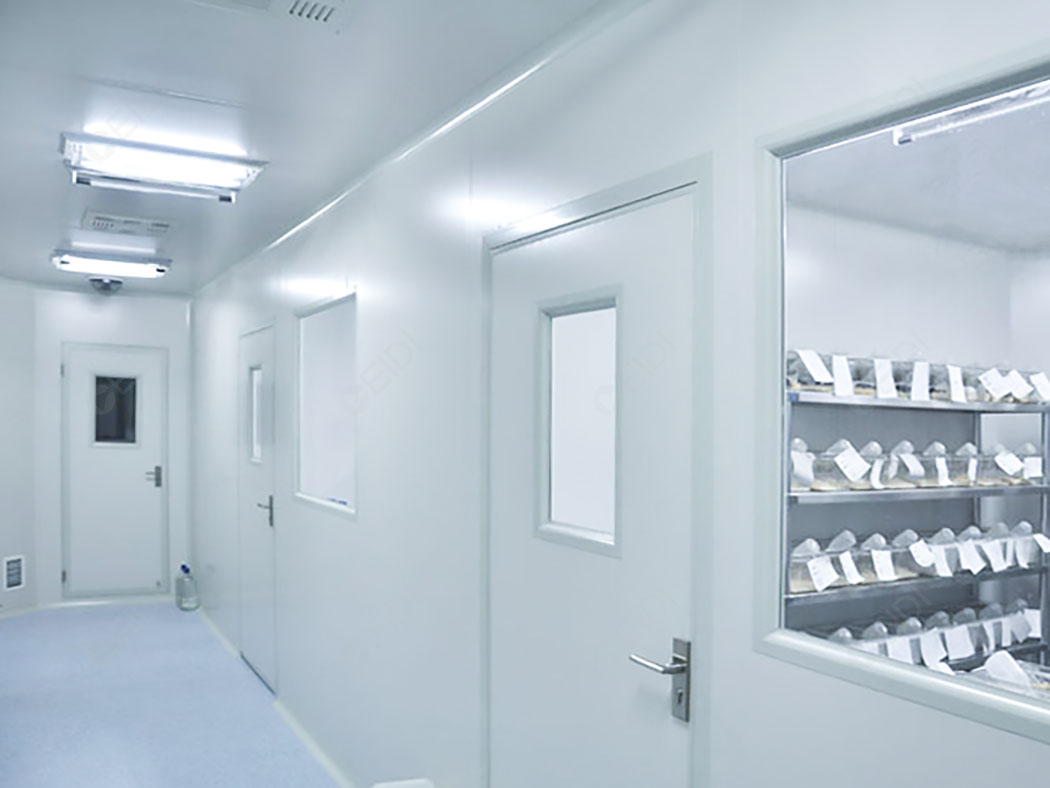Welcome to the official website of Xidi laboratory, the laboratory design and decoration recognize Xidi!
|
|
Home >> News >> Technology
文章出处:Technology|阅读量:627|发表时间:2021-02-25
Animal experimentation means that through a long process of animal research, the research value of experimental animals has not only developed in biological sciences, but also has been closely linked with scientific experimental research in many fields, and has become a guarantee for modern scientific experimental research. An indispensable condition. Then, buildings suitable for breeding and breeding experimental animals must have certain standard requirements. Both the design and the decoration of these buildings are not the same as conventional commercial tooling, and they are also different from ordinary pets. Laboratory animals The breeding of the animal laboratory serves scientific research, especially the environmental factors have a great impact on it. In addition to the strict construction requirements, it must meet the test standards. The management measures of the animal laboratory are also constantly discussed and improved by many medical staff. Only through scientific and thorough design, perfect construction and strict management can the laboratory obtain complete experimental data. Today, CEIDI Xidi will share with you which standards need to be followed in the construction of animal laboratories.

I. Basic requirements for planning and design of animal laboratory
1. Site selection: secluded and sanitary;
2. Water supply: drinking water and pure water.
3. Building: Clean corridors, breeding rooms, polluted corridors and other rooms are required;
4. Air-conditioning system: it has controllable temperature and humidity, air velocity and distribution, and a certain amount of air exchange and air pressure;
5. Lighting: The windowless animal room uses fluorescent lights, and the windowed animal room can be installed with glass windows to filter out ultraviolet rays. Requires 12 hours of light and 12 hours of dark;
6. Arrangement: Divided into preparation area, breeding area, and experimental area. The flow of people, logistics, and animals are required to be separated (one-way flow); purification and pest control are required.
II. Standard requirements for animal laboratory construction
1. Strictly protect intellectual property rights;
2. Ensure the storage of dangerous goods;
3. The net floor height is too low, which affects the pipeline layout, and the space after decoration is low;
4. Design waste gas and wastewater treatment systems to reduce hazardous waste discharge;
5. Design rooms and rooms, controlled access control systems in the laboratory;
6. Designed air shafts, or the location, size, and number of air shafts cannot meet the requirements;
7. Establish laboratory waste liquid recovery system and intelligent control system to improve the efficiency of laboratory water and electricity utilization;
8. Important rooms in the laboratory are not allowed to be inaccessible, and anyone in the public area can enter;
9. The construction should improve the comfort of the experiment, create a comfortable public environment for laboratory personnel, and ensure the stable development of the laboratory.
III. Control range of general environmental factors in animal laboratory
1. Noise 40~50dB (when there is no animal), 60 dB when there is an animal, and the Ministry of Health stipulates less than 70 dB. (9) Odor Ammonia 20ppm.
2. The target temperature is 21~27℃. The pharmacopoeia stipulates that it is 17~28℃. It may vary by animal species.
3. Environmental cleanliness level The general animal breeding room is greater than 100,000 level.
4. Humidity is 45%~55%. The Ministry of Health stipulates that it is 40% to 60%.
5. Air velocity 10~25cm/s. Avoid direct blowing.
6. The number of air changes is 6~15 times/h. The fresh air is 2/3.
7. Air pressure Positive pressure in clean area, negative pressure in infected area.
8. Lighting 150~300lx (artificial lighting).
IV. Air system construction requirements for animal laboratory construction:
1. Fresh air: Preventing cross-contamination and deodorizing are two major problems. For this reason, most of the purification air conditioning systems must use fresh air. However, due to the large number of air changes in the purification system and fresh air, the energy consumption problem is prominent.
2. Air purification system: Because the animal room is a place where the experimental animals move for a long time, it is impossible to sterilize the room by fumigation and washing under the breeding conditions. Generally, it can only be scrubbed with a weak disinfectant. In this case In order to avoid microbial infection, ensuring air purification is the first condition.
3. Deodorization: It is not only needed by the facility for the external environment and staff, but also needed by the experimental animals themselves. Because of the indoor contamination by external microorganisms, the excrement of animals and the secondary conversion of microorganisms into ammonia, hydrogen sulfide, alcohol and other gases, They are also important pollutants. The stronger the smell of these gases, the lower the cleanliness of the animals themselves. Generally, there are two methods of adding fresh air and adsorbing activated carbon.
V. Other matters needing attention in the construction of animal laboratory:
1. According to the requirements of different types and levels of experimental animals, establish corresponding facilities and animal rooms, activity venues and corresponding auxiliary rooms. The site should be selected in a place that is quiet, clean and does not affect the outside world.
2. The density of animals in the cage should not be too high, and there should be air supply, exhaust, cooling and heat preservation equipment. There must be special sewage and drainage facilities to prevent the spread of pathogens. Various cages should be disinfected regularly, and the litter should be disinfected by high temperature and replaced in time to keep the indoor ammonia concentration below one part per million (PPM).
3. The animal room must be well-lit, well ventilated, and the ground clean and free of water; the ceiling and walls must be easy to clean, and the external walls, roofs, ceilings, doors and windows, and pipes leading to the outside must be prevented from entering by outside animals, mosquitoes and other pests. The indoor temperature is controlled at 18-29 degrees, the relative humidity is 40-70%, and the noise is within 60 decibels.